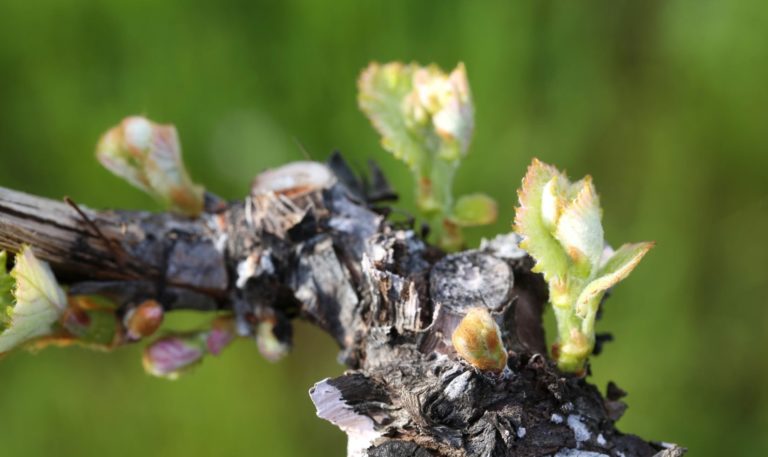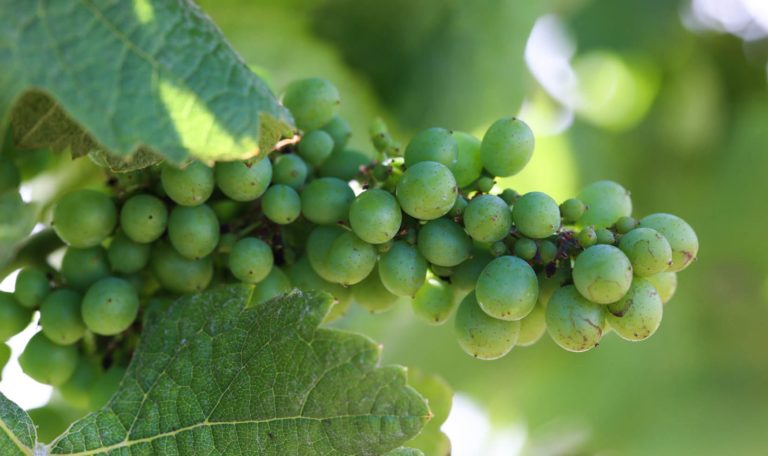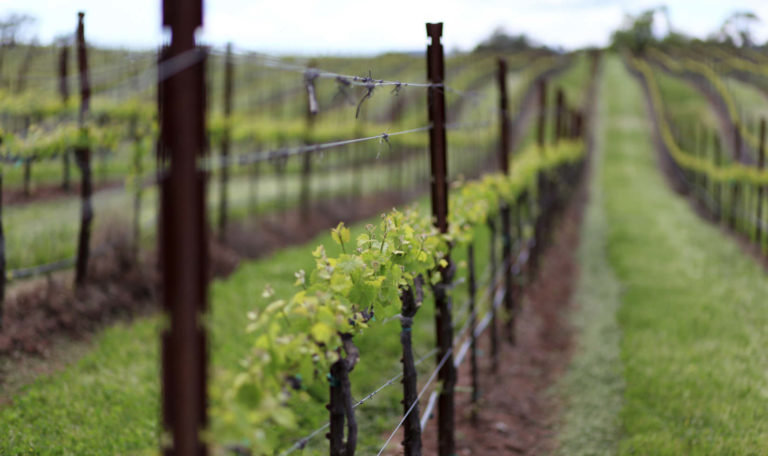There is no mistaking it—bud break is that glorious moment that happens in the vineyard each spring as the vines wake up from their winter dormancy. All winter long, grapevines stood lifeless and bare, but as the temperature rises and the days lengthen, they are suddenly bursting with vitality. They draw on the energy they’ve stored deep within their trunks and roots through the winter to push out the first green leaves of a new growth cycle. But what is bud break (also known as bud burst)?
Watch our time-lapse video to see bud break unfolding:
Having been tightly packed and protected all winter, these tiny and sparse leaves have but one goal—to restart photosynthesis and generate new energy. Now the vine is no longer dependent on the minimal energy reserves it tucked away to get through the winter months.
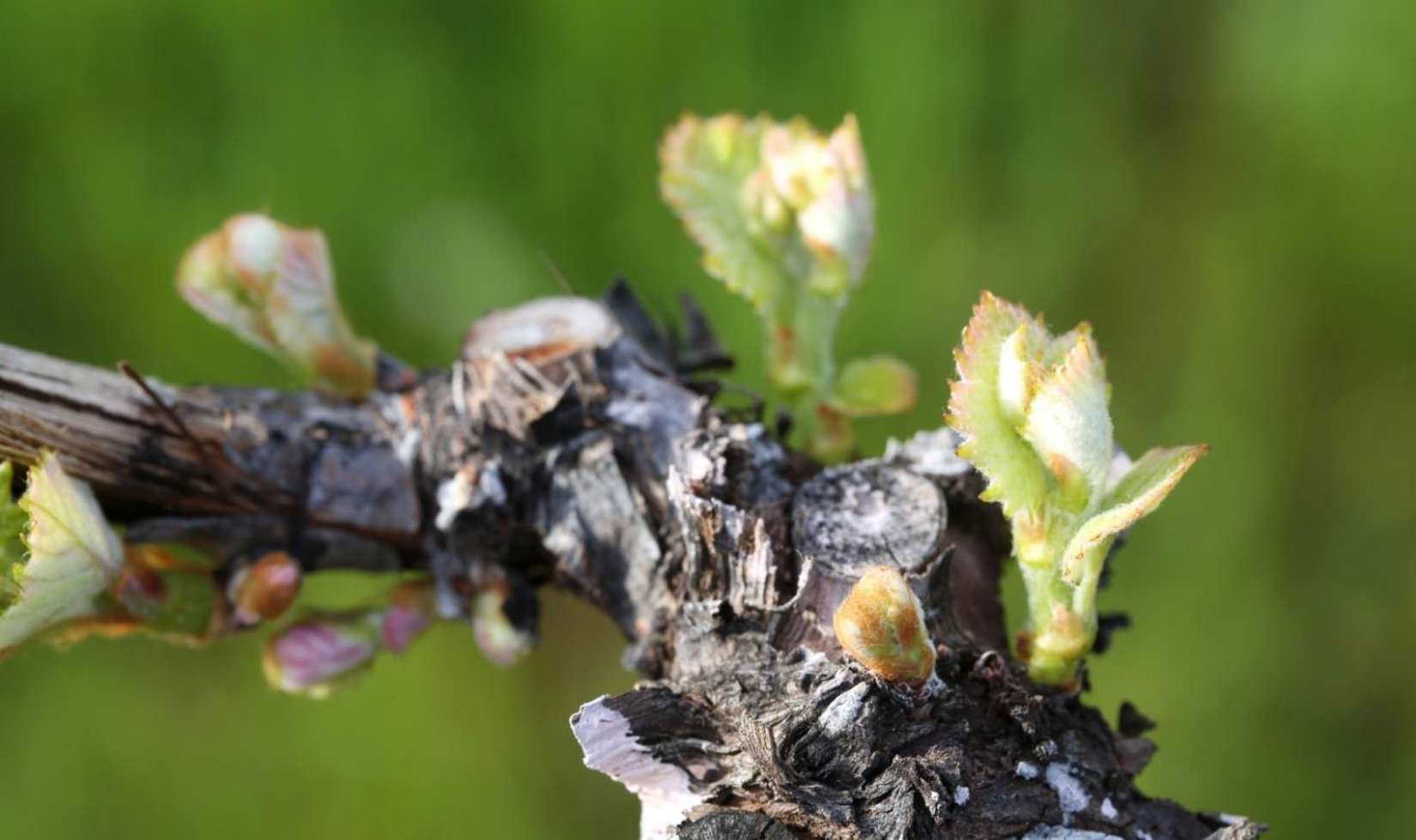
When Does Bud Break Occur?
Bud break appears first in the chardonnay vineyards in mid-March, but during warmer winters (like 2012, 2013 and 2014), chardonnay bud break can happen as early as mid-February. The last varietal to break buds is cabernet sauvignon, which typically happens up to three weeks later than chardonnay. Like magic, you’ll see entire vineyards turn from drab brown to vibrant green as those first leaves begin photosynthesis, pushing out more and more leaves in what is termed “rapid shoot development.”
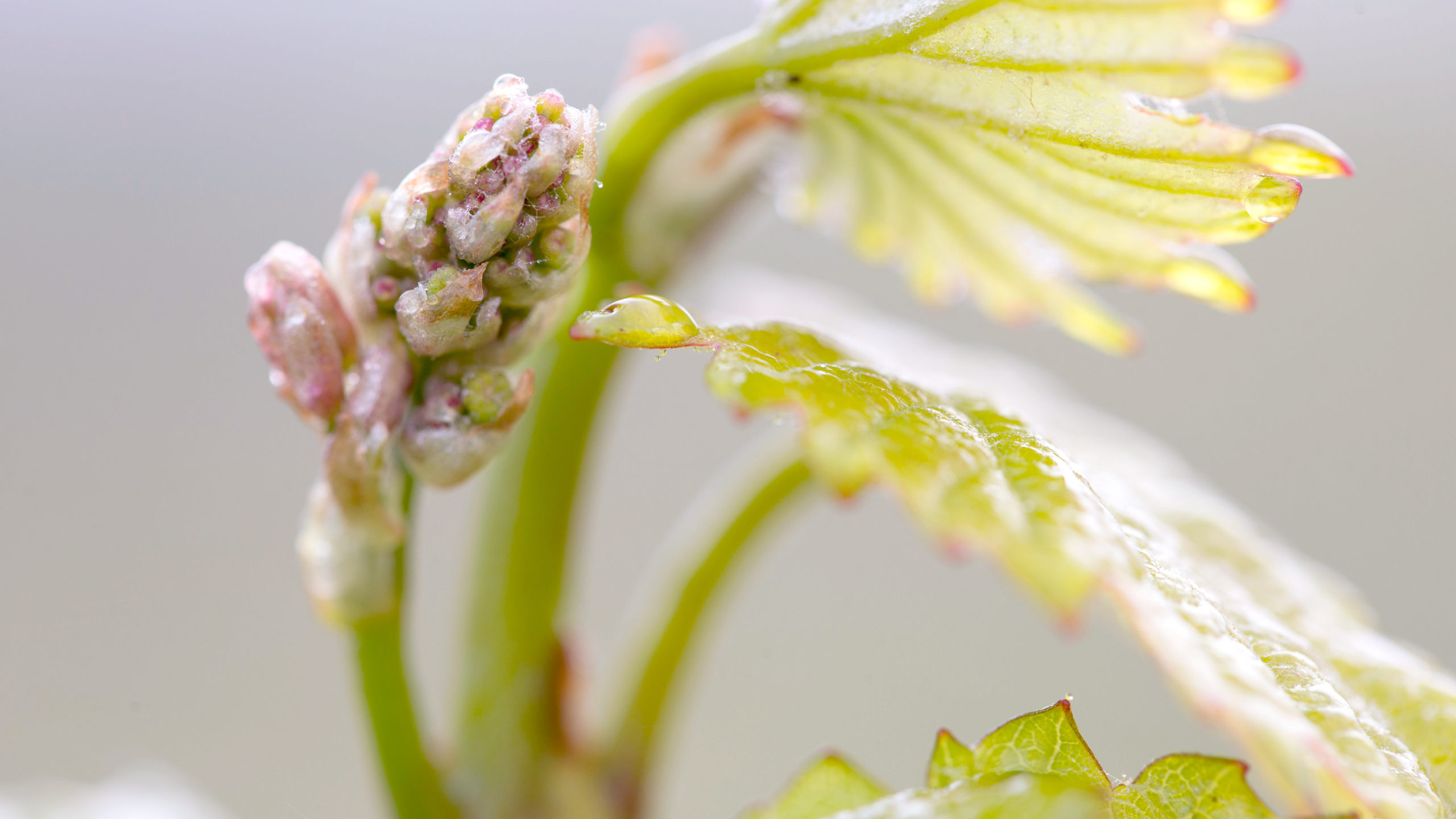
How Does the Weather Impact Bud Burst?
Spring is a crucial time in the vineyards as those first delicate buds can be destroyed by even just one cold night with frost—if those buds go below 32 degrees, they’re done for the season. Giant fans or wind machines in the vineyards help to prevent this by stirring up the air so that the warmer air gets pushed down towards the ground where the cold normally settles. Sprinkler systems, too, help to protect the buds. We run them through the night when the temperature drops so that an ice shell forms around the buds, keeping them at 32 degrees. Fortunately, the last major frost event occurred a decade ago in 2008. That year, we lost the entire malbec crop to frost, a key blending grape for Bordeaux-style cabernet sauvignon.
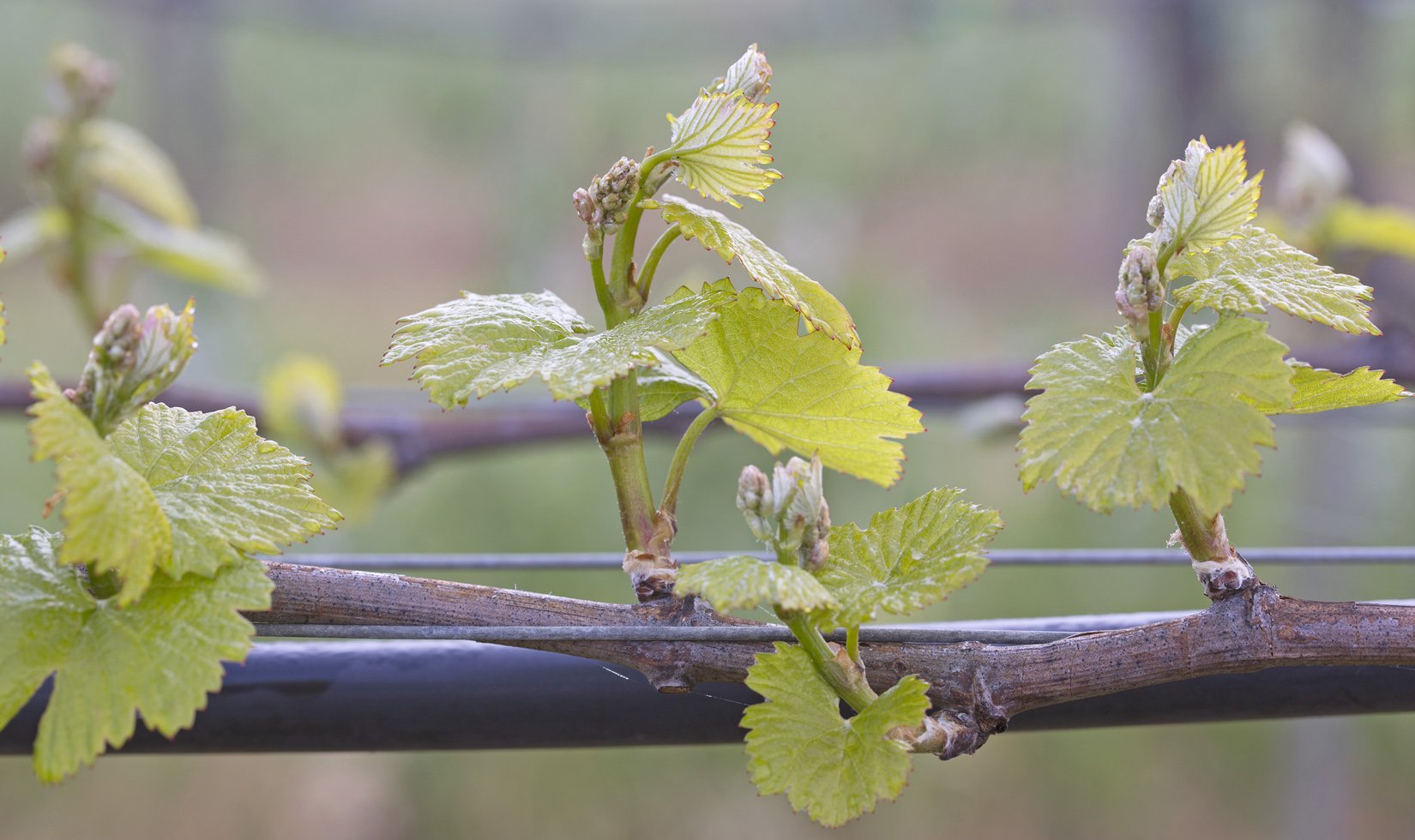
Mild temperatures are desirable during spring–not so cold that frost is a factor, but not too hot so that the grapevines grow too rapidly. Heavy winds are also concerning, as they can snap off the shoots of baby buds. Once the growing season has begun with bud break, we wait eagerly until May when flowering begins, when the grapevines bloom, which determines both the size of the crop and the size of the berries.
Interested in learning more about bud break? You can read season-by-season bud burst reports on vintages for 2016, 2015, and 2014 growing seasons. Find more photos of bud break in the vineyards in our bud break photo gallery.
Join our rewards program today. For every dollar you spend at Jordan, you’ll earn points to redeem toward exclusive guest privileges at our Alexander Valley estate. As a thank you for joining, you will earn 3,000 bonus points. You’ll also receive our monthly e-newsletter with event invitations, wine offers and blog posts like this one.


